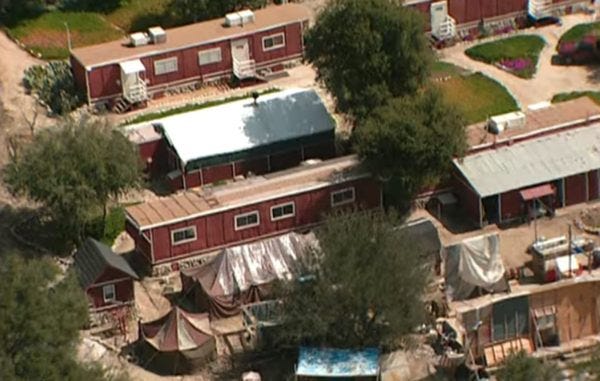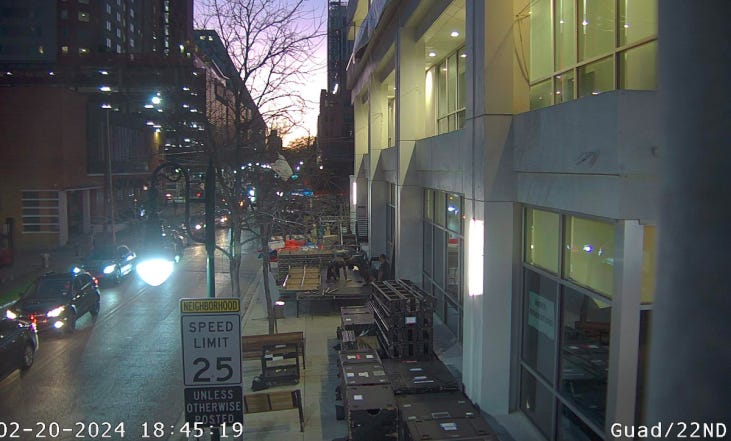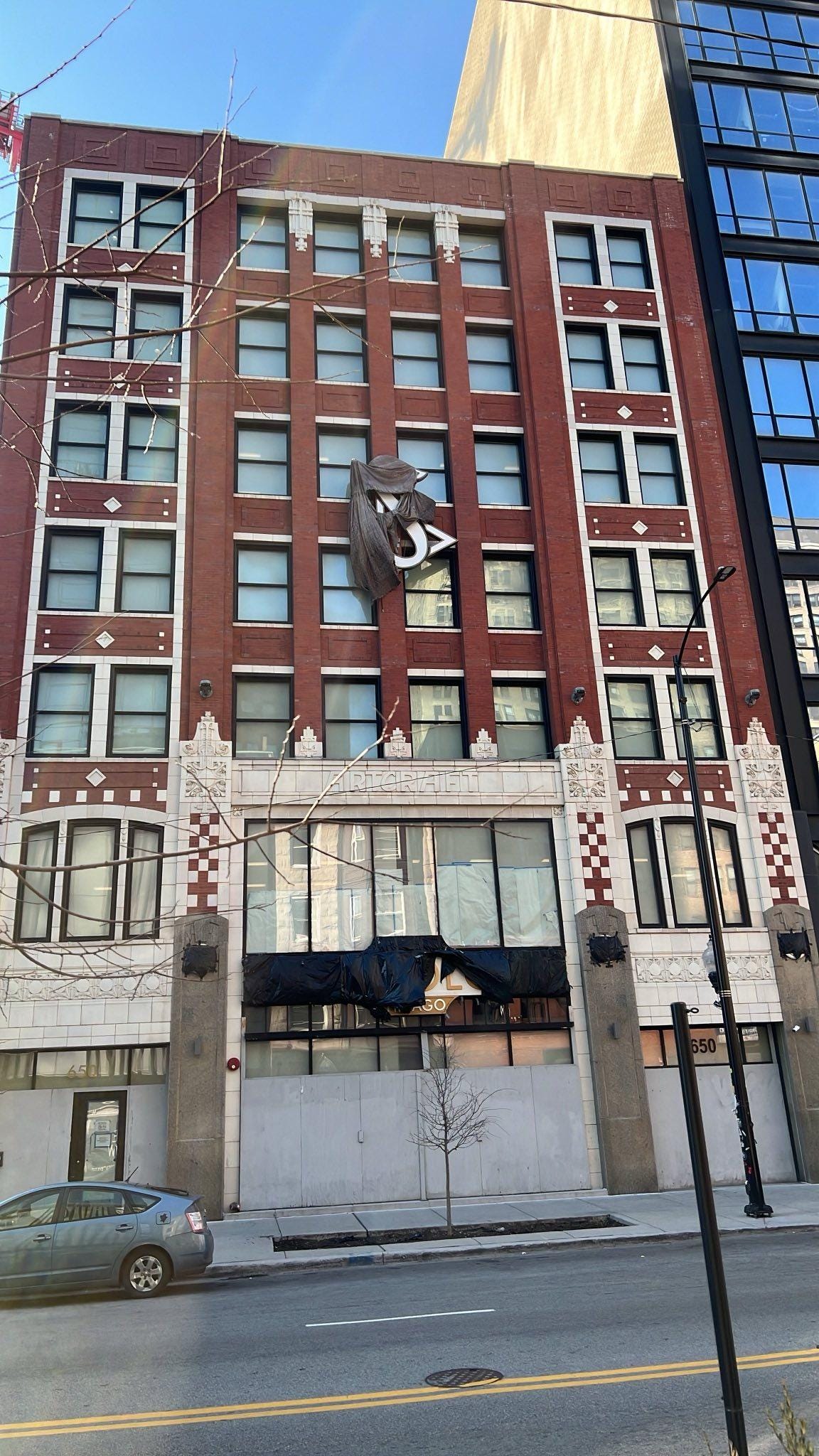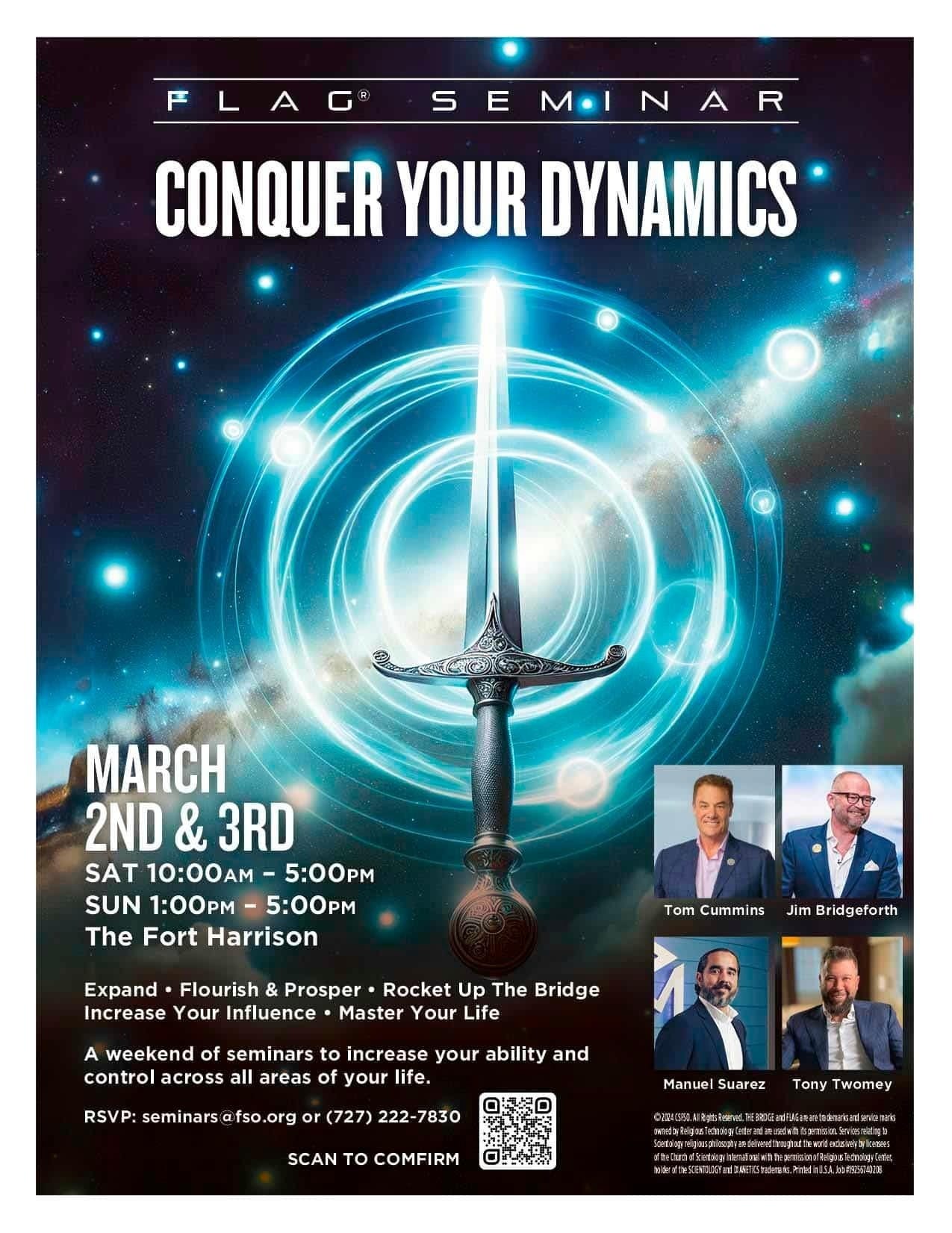[Today’s guest post is by Bruce Hines]
“Break time!” These words came to me across the valley with urgency. Then I heard other voices repeating the signal. It was a code. It meant that I should stop what I was doing, drop any tools, and immediately walk, not run, to a place where I would not be visible from the air.
Walking was good. Normally we had to run everywhere, no walking allowed. And the idea of any kind of break was very appealing. In our day-to-day activities, I was secretly hoping I’d hear those words.
Prompting this interlude was a small, single-engine plane, visible in the sky. It wasn’t very close, but we couldn’t take any chances.
What on earth was this all about? Well, you see, I was on the Rehabilitation Project Force. This was a special part of Scientology’s Sea Organization. In it were Sea Org members who had been deemed in need of rehabilitation. They had purportedly failed to live up to the standards of that “elite” group. I’d say a majority of Sea Org members, at least at that time, had been through an RPF program at least once.
The RPF retention camp was located in a place known as “Happy Valley.” It was, in fact, in a valley, surrounded by rugged mountains. It occupied about 500 acres, and had been used for a variety of things during the time Scientology owned it. It was located a couple of miles up a windy road from the town of San Jacinto, California, and roughly 10 miles due west of Mount San Jacinto, which is the big mountain visible to the west from Palm Springs.
Various incarnations of the RPF had been located there, as well as where the children of Sea Org Members who worked at the Int base were stashed to keep them out of the way — it was a kind of faux boarding school where there was no real education and the kids lived a paramilitary life with a lot of manual labor. For a time there was also farming and orchards as part of a “self-sufficiency project” with the idea that produce from there (eggs, lots of various crops, and even pork) could someday feed the workers at the Int base. Some Sea Org workers who had gotten in trouble and even some who had gone into a psychotic episode were put out there in a building called the Campbell House for “handling” (like maybe the infamous “Introspection Rundown”).
Some months earlier, in March 1998, a helicopter had flown over and filmed the property and also the Int base. Parts of the footage were used in a documentary that aired in Germany named “Missing in Happy Valley” (you can find it on YouTube). The subject was a woman named Wiebke Hansen, who had been the Executive Director of the Scientology organization in Hamburg, Germany. After she got in big trouble for reporting false statistics up to international management, reflecting how much money had been taken in and how many services had been delivered, she disappeared. Family and co-workers in Germany didn’t know what had happened to her.
Such a documentary airing about Scientology was a “flap” of epic proportions. It was horrendous PR. So much so that three years later the RPF was disbanded there and some time after that the property was sold. That’s why we RPFers were trained to keep a lookout for anyone who might be filming us from the air and to get out of sight if that were a possibility.
One time, David Miscavige got Tom Cruise’s helicopter pilot to fly over the RPF site. I remember that the helicopter made several passes very low directly overhead. I’m not sure what the purpose of that was. Maybe to intimidate us? Maybe to see how much would be visible from close range? I don’t know if either Cruise or Miscavige were in the helicopter. It happened midday. I had been up all night “on watch” and was lying in bed trying to get a bit of sleep. I secretly hoped that civil authorities were taking action to shut the place down. Alas, that was not to be.
The documentary showed the red trailers and a large green army tent that marked the RPF site, which was located hundreds of yards away from other buildings on the property. It was isolated and out of sight. I have wondered how the documentarians (Peter Reichelt and Ina Brockmann) knew to film that area.
How did that RPF internment camp get there? It started in 1995. At that time there was no RPF located on the Int base nor on the Happy Valley property (generally referred to by the acronym, HV). Wayward Sea Org members were being sent to RPF sites in LA or in Clearwater, Florida, at that time. I was one of the lucky group of twelve people who built that facility at HV. Others in that group included Barret Oliver (child actor), Janadair Hockaday (one of the early Commodore’s Messengers), Pablo Lobato (who had been on the Watchdog Committee), Jean Discher (who had been the head of Scientology Missions International), a guy named Jeff Kretz (who had been at the Church of Spiritual Technology base near the town of Crestline in the mountains above San Bernadino), Wiebke Hansen herself, Francesco Frau (an Italian guy), and some others I am forgetting.
Starting in February of that year, most of us slept in trailers in a secluded area of the Int base, under 24-hour watch by security guards. We had meals in an old greenhouse. For the first few months we worked on projects on the Int base property — like clearing a road that ran along the hills behind the base on the north side. And then getting an irrigation system along that road repaired and running to green up the vegetation that grew along it, which was supposed to create a fire break. We weren’t yet doing the RPF program. We were just forced to do manual labor all day long. There was a lot of digging up weeds and moving large rocks and boulders.
Then, in June I think it was, we started being taken in a van out to Happy Valley, where we created that RPF site out of nothing. Four old, used mobile homes had been purchased and towed to the site at HV. A couple of Int base staff had been put on a special project to move those trailers into their final locations. When we first arrived, there they sat with no electrical power, no water, and no sewage system. They were surrounded by many oak trees of a certain type indigenous to that area.
In our initial briefing out there, we were instructed to say, if by some chance an outsider asked, that were were itinerant workers and those trailers were our living quarters. We were also briefed about the rattlesnakes, tarantulas, scorpions, mountain lions, coyotes, cactus, and poison oak all around us, to discourage us from trying to escape.
For the next few months, the twelve of us worked to make those four trailers inhabitable. One would have showers and a laundry area; one would be for meals and meetings; one would be for sleeping, with three-high bunkbeds packed in; one would be for studying and auditing. First, we built in a culvert (a long metal pipe about five feet in diameter) to channel a stream that ran near the RPF site. Often that stream was dry, but in the rainy season quite a bit of water could flow through it. Then we constructed a bridge by piling a whole lot of dirt over the culvert and tamping it down. Luckily, one of the staff on the special project operated a backhoe to accomplish that. Then cars could drive to the RPF site, as that road was the only way in.
For water, we tapped into a line that ran down from a well to the main part of the HV property. That point was a couple of hundred yards from the trailers. We dug trenches from there to the trailers, again with the benefit of the backhoe. Many large rocks had to be removed. We dug the smaller trenches into the rock-hard desert soil using pickaxes and shovels. Then we ran the pipe that carried the water, gluing together long pieces of PVC. Some of these were heavy, being maybe 8 or 10 inches in diameter.
The electrical and sewage lines were put in similarly. But it was complicated by the fact that building codes required a specific amount of separation between those three types of lines. Somehow after much toil, often in intense desert heat, that pipe and conduit got run and covered up.
We screwed 8 x 10 foot pieces of plywood to the sides of the trailers. Then we painted those bright red, as can be seen in the documentary footage. The idea was to make them the color of old-time school houses. The task of spray painting them red, using an old gasoline-powered sprayer, fell to me. Actually that part was fun.
There was a lot of carpentry, plumbing, and electrical work to do to get everything ready. Finally, after some months, the twelve of us moved into those trailers. As time went on, the RPF grew, and more and more things got built. After about five years, there were about 120 people on that RPF. Hey, I just realized that was 10X expansion!
At long last, we were made to begin our RPF programs, which consisted of a long series of prescribed steps, supposedly leading to being rehabilitated. Generally that took a couple of years or more. We wanted that, though, as it was the only way to get back in the good graces of management. Then we could be with our spouses and friends and co-workers at the Int base again. We would no longer be persona non grata.
However, that was when the real hell began.
— Bruce Hines
Ideal Org update: The imminent and the obscure
We want to thank Pan and the others at the dot org site who have been keeping an eye on the webcam view outside the Austin “Ideal Org” as it shows signs that the grand opening there is really happening this Saturday. In the image above, Pan deduced that a stage is being constructed on a sidewalk for the ceremony to take place. Sure looks like it.
The picture in Chicago is murkier. Yesterday we told you that we’d learned a film permit had been acquired by Scientology for a period from February 26 to March 5, centered around Saturday, March 2 which we thought might suggest back to back weekends with openings in Austin and Chicago.
However, our helper in Chicago has detected basically no change at all in the appearance of the location on Clark Street…
And also, Alex Barnes-Ross forwarded to us this flier, which indicates that on March 2, big whales Tom Cummins and Jim Bridgeforth will be holding a fleecing at the Flag Land Base in Clearwater, Florida…
Would Dave hold a grand opening in Chicago without two of his biggest suckups, Cummins and Bridgeforth, in attendance?
It’s puzzling. We’ll keep an eye out on what’s going on in Chicago, but for now we’re really not sure if an opening is happening there on March 2.
Want to help?
Please consider joining the Underground Bunker as a paid subscriber. Your $7 a month will go a long way to helping this news project stay independent, and you’ll get access to our special material for subscribers. Or, you can support the Underground Bunker with a Paypal contribution to bunkerfund@tonyortega.org, an account administered by the Bunker’s attorney, Scott Pilutik. And by request, this is our Venmo link, and for Zelle, please use (tonyo94 AT gmail).
Thank you for reading today’s story here at Substack. For the full picture of what’s happening today in the world of Scientology, please join the conversation at tonyortega.org, where we’ve been reporting daily on David Miscavige’s cabal since 2012. There you’ll find additional stories, and our popular regular daily features:
Source Code: Actual things founder L. Ron Hubbard said on this date in history
Avast, Ye Mateys: Snapshots from Scientology’s years at sea
Overheard in the Freezone: Indie Hubbardism, one thought at a time
Past is Prologue: From this week in history at alt.religion.scientology
Random Howdy: Your daily dose of the Captain
Here’s the link to today’s post at tonyortega.org
And whatever you do, subscribe to this Substack so you get our breaking stories and daily features right to your email inbox every morning.
Paid subscribers get access to two special podcast series every week…
Up the Bridge: A weekly journey through Scientology’s actual “technology”
Group Therapy: Our round table of rowdy regulars on the week’s news







Bruce was waiting to be rescued. Wow. I think a lot of us felt that way. It’s hard to explain. Even if you don’t have any physical ties holding you back, you can still feel very trapped there. AND even tell authorities you are ok and don’t need any help.
It’s insane what we tell ourselves to endure what we endured.
Minor correction (of course Bruce would not have known this). Happy Valley was an RPF, operating out of the Campbell House when I arrived there in 1983. We didn't have to build new housing but we did a lot of renovations. While also building the Music Studio and so on at the Int Base.
There is a Hubbard "advice" about the Int Base, one line of which simply says: "There is no RPF there". So the use of slave labor to renovate and construct buildings like the old Bonny View house, the "12 mic" lecture recording studio, the Music Studio and so on was kind of problematic. At times they have gotten around it by simply assigning people to slave labor willy-nilly as punishment. "Arbeit macht Frei" if you will. Other times they called it the Decks Project Force or simply "being on the decks". For about a year after I got there, it was simply the RPF at the Happy Valley. Then they changed the name of the RPF to Gold Construction Team (GCT). We were basically still slave labor and still lived at HV with the real RPF but took the bus to Gold every day.
On the GCT, on the electrical team under Martin Reid (with Amy Scobee for part of that time), I did high and low voltage electrical work, HVAC design and installation, lighting systems, control systems, all kinds of skilled labor by unskilled slaves.
Probably the piece de resistance of that period was the generator backup system. The 2 MW diesel generator and fuel tank are still visible on Google Maps though the rest of the Old Gilman House area is razed. Within three minutes after a power outage that generator is running and switched in to power the whole base. Sadly it is really too small for that, but the control system works!
At times they shut down the RPF program in the 90s, then as Bruce says they started it up again. But there were always smiling type-3 folks sequestered there in the Valley of the Many Happy Smiles. Not to mention the kids. When I got RPFed for being late to muster in 1990 they sent me to LA instead of HV (it's in Marc's book "Blown for Good").
Not commenting on the Bunker as Techie anymore, too much political garbage.